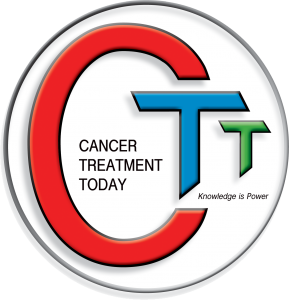Tibsovo for glioblastoma – pro
Agios Pharmaceuticals, Inc. (NASDAQ:AGIO), presented updated data from the ongoing perioperative study, confirming brain penetrance and robust biomarker suppression with treatment of single agent vorasidenib or TIBSOVO® (ivosidenib) in low-grade glioma with an IDH1 mutation. The data were featured in an oral presentation at the Society for Neuro-Oncology (SNO) Annual Meeting in Phoenix. Vorasidenib, an investigational, oral, selective, inhibitor of the mutant isocitrate dehydrogenase-1 (IDH1) and IDH2 enzymes, was designed for enhanced brain penetrance and selected for pivotal development in IDH mutant low-grade glioma. Vorasidenib and TIBSOVO® are being evaluated as a single agent in an ongoing perioperative study in IDH1 mutant Grade 2/3 glioma. The primary endpoint is 2-hydroxyglutarate (2-HG) concentration in tumors resected following presurgical treatment with vorasidenib and TIBSOVO® compared with untreated control tumors. Patients were randomized to 500 mg TIBSOVO® once daily, 50 mg vorasidenib once daily or the control arm in cohort 1; and 250 mg TIBSOVO® twice daily or 10 mg vorasidenib once daily in cohort 2. Patients were treated for four weeks prior to surgery and had the option to continue postoperative treatment until disease progression.
As of the July 26, 2019 data cutoff, 49 patients were randomized before surgery, and 39 remain on treatment. The median (range) postoperative treatment duration for all doses was 5.42 (0.913.5) months for vorasidenib and 6.93 (1.013.2) months for TIBSOVO®. Baseline characteristics were similar across the control and treated groups. Overall, 88% of patients had World Health Organization (WHO) classified Grade 2 tumors. Less than a third of patients had prior radiation therapy and approximately half had prior systemic therapy.
Data from the 42 efficacy evaluable patients (21 in the vorasidenib arm; 21 in the TIBSOVO® arm) as of the data cut-off showed:
•Among patients treated post-operatively with 50 mg vorasidenib, four patients (31%) achieved objective tumor responses (two achieved a partial response, defined as tumor shrinkage based on T2/FLAIR signal of at least 50%, and two achieved a minor response, defined as tumor shrinkage based on T2/FLAIR signal of at least 25% but less than 50%) according to the investigator by Response Assessment in Neuro-Oncology for low-grade glioma (RANO-LGG).
•Among patients treated post-operatively with 500 mg TIBSOVO®, four patients (31%) achieved confirmed responses (two achieved a partial response and two achieved a minor response) according to the investigator by RANO-LGG.
•15 patients treated with vorasidenib and 16 patients treated with TIBSOVO® experienced stable disease, resulting in disease control rates of 90% and 95% respectively.
It is There is a Phase 3 INDIGO study of 366 patients with IDH mutant Grade 2 non-enhancing glioma in a 1:1 double-blind randomization to either 50 mg of vorasidenib once daily or placebo.
•The primary endpoint is progression free survival, as assessed by a blinded independent review committee. Tibsovo (ivosedinib) is indicated for patients with newly diagnosed IDH1-mutated acute myeloid leukemia (AML) in older adults or those with comorbidities to include the combination with azacitidine. Single-agent vorasidenib or ivosidenib (Tibsovo) led to brain penetrance and 2-hydroxyglutarate (2-HG) suppression in patients with low-grade glioma who harbor IDH1 mutations. Several small studies suggest that it si effective, but the evidence so far is insufficient to recommend it for routine use. It has been submitted for regulatory approval for a new indication of cholangiocarcinoma, and was approved in the USA under the oprhan drug status, and but so far it had even be submitted for the diagnosis of glioblastoma.
There is now significant literature to support this use. It includes the INDIGI trial and other smaller trials. FDA approval is expected soon.
Borger DR Tanabe KK Fan KC et al. Frequent mutation of isocitrate dehydrogenase (IDH)1 and IDH2 in cholangiocarcinoma identified through broad-based tumor genotyping. Oncologist. 2012; 17: 72-79
Keng Lam, Heather Y. Lin, Garret Williford, Chetna Wathoo, and Nazanin Majd, Ivosidenib off-label use for IDH mutant gliomas: The MD Anderson Cancer Center real life experience. : Journal of Clinical Oncology
Volume 41, Number 16_suppl
https://www.abta.org/mm-first-targeted-therapy-for-glioma-vorasidenib/, Accessed 5/23/2024
R.V.Lukas et al, Glioma Response to IDH Inhibition: Real-World Experience. Clin Ca Res, Clin Cancer Res (2023) 29 (23): 4709–4710.
Tibsovo Prescribing Information 2024
Konteatis Z, Artin E, Nicolay B, Straley K, Padyana AK, Jin L, Chen Y, Narayaraswamy R, Tong S, Wang F, Zhou D, Cui D, Cai Z, Luo Z, Fang C, Tang H, Lv X, Nagaraja R, Yang H, Su SM, Sui Z, Dang L, Yen K, Popovici-Muller J, Codega P, Campos C, Mellinghoff IK, Biller SA. Vorasidenib (AG-881): A First-in-Class, Brain-Penetrant Dual Inhibitor of Mutant IDH1 and 2 for Treatment of Glioma. ACS Med Chem Lett. 2020 Jan 22;11(2):101-107.
argeted glioma therapy makes strides. Nat Biotechnol 41, 884 (2023). https://doi.org/10.1038/s41587-023-01869-7
Australian Public Assessment Report for Tibsovo
Active ingredient: Ivosidenib
Sponsor: Servier Laboratories (Aust) Pty Ltd
October 2023
